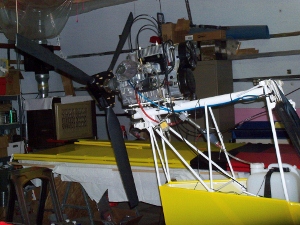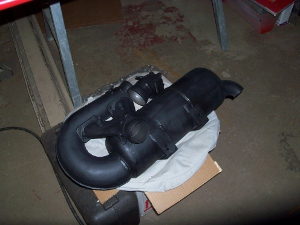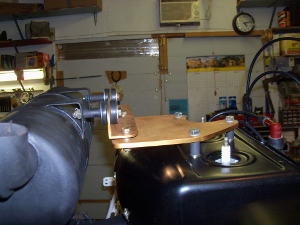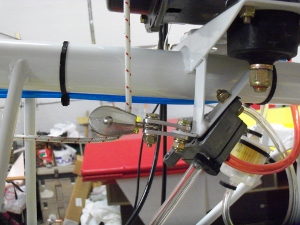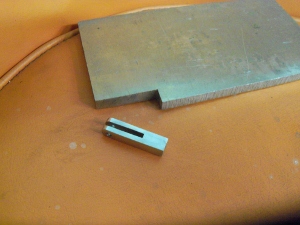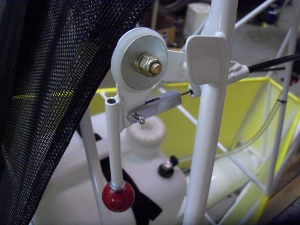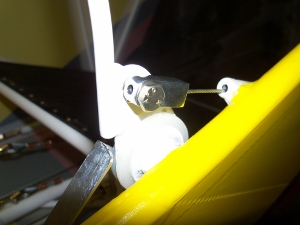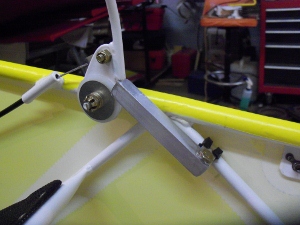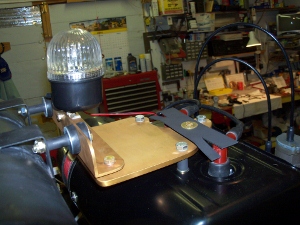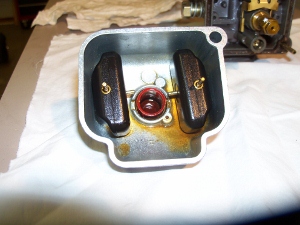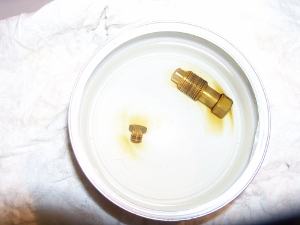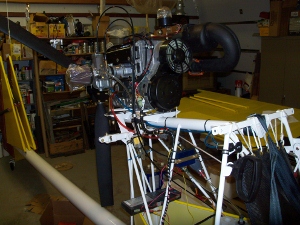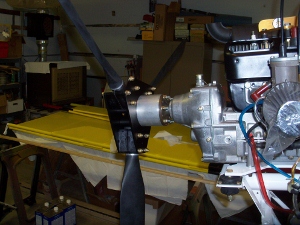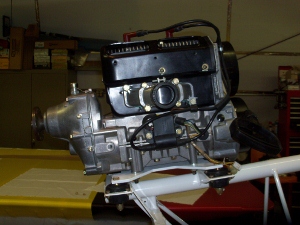
Used Rotax 447
The original plan was to purchase a new Hirth engine. There are not many choices since Rotax discontinued all the models smaller than the 582. The newer Hirth engines have been proving to be good choices.
However, while discussing engines on the Matronics Kolb List, a fellow member came forward and offered a slightly used (14 hours TT) engine at a very reasonable price. It arrived looking all the world like a brand new engine.
The engine mounts and plate were obtained from Kolb. I alodined the plate and painted it with epoxy primer so it would match the white of the fuselage. It is my belief that white will show flaws and cracks more easily than other colors.
